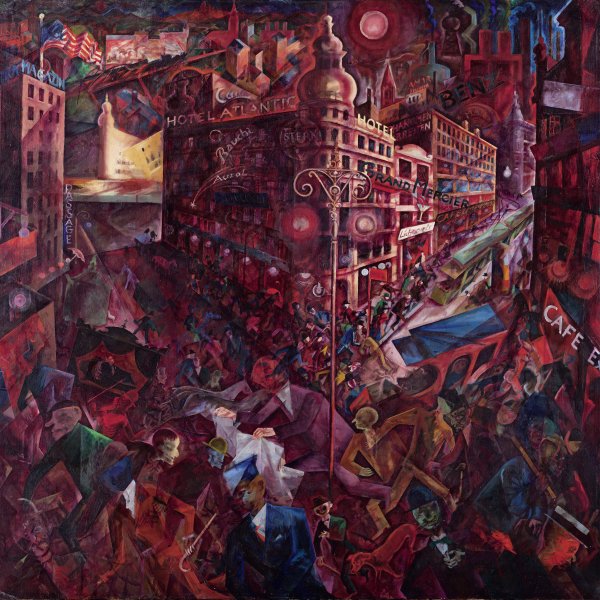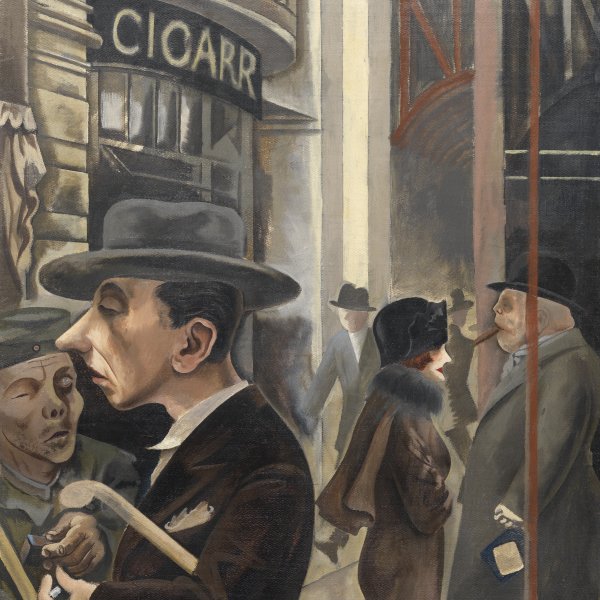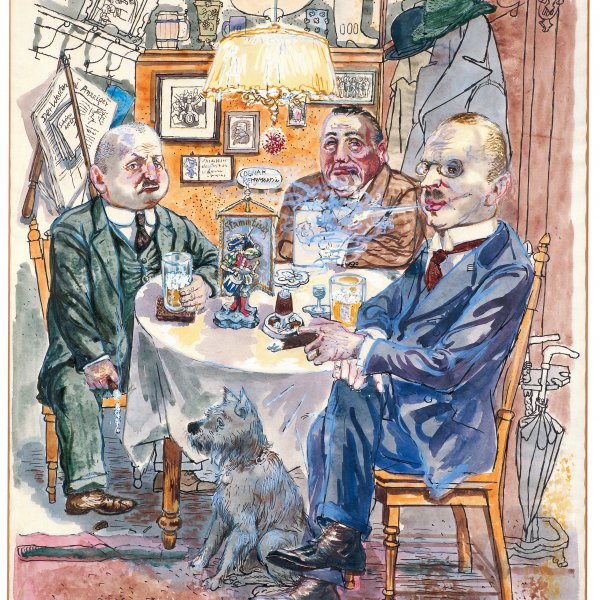Twilight (verso: Study for the Central Figure of "Twilight")
During the early part of the 1920s George Grosz almost stopped painting altogether to concentrate on producing satirical drawings and portfolios of prints that were published by Malik, the publishing house owned by his friend Wieland Herzfelde. His essay “Art in danger”, which even questioned the validity of easel painting, came out in 1925.
The present watercolour, entitled Twilight (Dämmerung) on account of its similarity to an illustration dated 1922 and published by this name in the Ecce Homo album of 1923, is a characteristic composition in Grosz’s graphic work. Through a series of superimposed and fragmented images he creates a magnificent allegorical portrait of Prussian society: a few members of the self-sufficient, hypocritical and materialistic bourgeoisie, prominent among whom is the foreground figure clad in a coat and hat, together with several vagrants, a prostitute and a beggar. Despite the simplicity of the image, all the main stereotypes of metropolitan life are represented.
Owing to Grosz’s keen powers of observation and the astounding precision of his gaze, the idea we have nowadays of Weimar Berlin is largely shaped from his mordant caricatures. The artist explained in the prologue of his book Love Above All, published in 1930: “As a realist, I prefer to use my pen and brush primarily to put down what I see and observe; and that is generally unromantic, sober and far from idyllic.” Similarly, Hannah Arendt did not consider Grosz’s cartoons to be satires “but realistic reportage”, as “we knew those types, they were all around us.”
The first owner of the watercolour was the diplomat Harry Graf Kessler (1868–1937), known as the “red count” for his leftist sympathies. He became the patron of artists like John Heartfield and George Grosz and sponsored several of the publishing house Malik’s initiatives.
Paloma Alarcó









